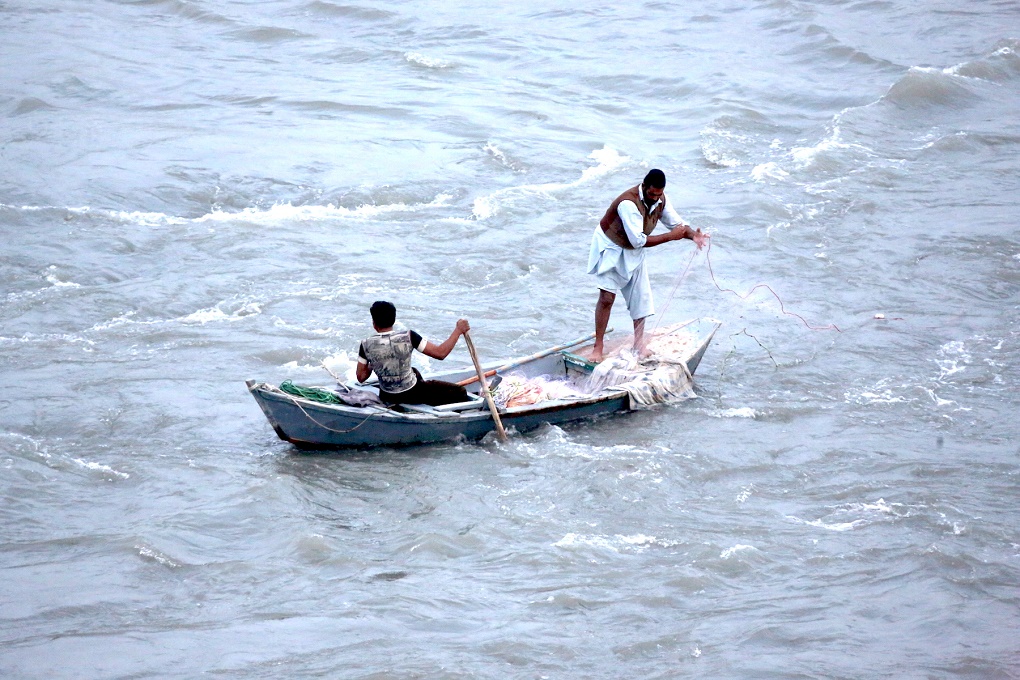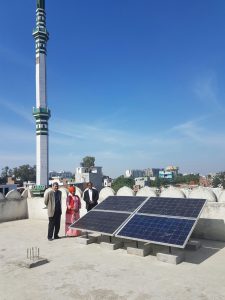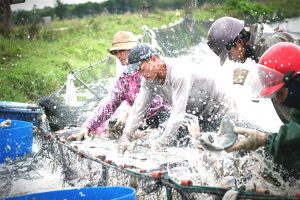“For most countries of the world, agriculture is the biggest user of water and the biggest cause of water shortages. And that is where the big solutions lie,” argues Fred Pearce in his book When the Rivers Run Dry. Sandra Postel in her book The Last Oasis maintains that the “technology and know-how for effective water husbandry does exist and with the methods already in use, farmers could cut their demand for water by 40-90%.”
If agriculture demand, which accounts for over 80% of all water usage in South Asia, can be cut to one-tenth of what it is, the water problem is over. So, all the hue and cry over water shortages narrows down to one issue – irrigation inefficiency.
Let us look at the Indus basin as an example. The way the Indus Water Treaty – the water sharing agreement between India and Pakistan – was drafted in the late 1950s, it encouraged water withdrawals from the rivers to the maximum extent possible, with no provision for long term sustainability. Although today’s global mind reckons sustainability as the foremost element while exploiting natural resources, water management in the Indus basin still seems hostage to the old mind set of the 1950s which considered every drop of water left in the rivers as ‘unused’ and the flows reaching the Indus delta as ‘escapages’.
Water in the brain
The management of water in the Indus basin has remained dominated by large structural interventions, financed by loans, focussing only on supplying water in abundance without managing the demand. These projects provided water in such abundance that water-rich cultures emerged with no sense of water conservation. Wasteful practices of flood irrigation became a way of life. This water-rich mind set, which engulfed water managers and water users alike, is now one of the biggest impediments to adopting efficient practices and conservation of water in the Indus basin.
Engineering interventions do not create water but only store and/or divert it to where it did not exist, while simultaneously depriving it from where it existed earlier. The negative environmental consequences, social impacts and economic externalities of large dams and diversions remain obscure because they are usually offset in time and space. The impacts, for example, of structures in the Indian state of Himachal Pradesh or the Mangla dam in Pakistan’s Jammu and Kashmir, hit the communities more than 1,000 km downstream in the Indus delta 50 years later, by reducing the flow of water and sediment and loss of fertile land. No engineering or financial mechanisms have ever been devised to assess these impacts let alone compensation for the downstream communities and the environment.
The unsustainable nature of our irrigation system is becoming increasingly obvious with time. John Briscoe and Usman Qamar in their book Pakistan’s Water Economy Running Dry have identified the Indus basin in Pakistani Punjab as the most inefficient irrigation region in the world. Over-irrigation caused waterlogging and salinity, which triggered Salinity Control and Reclamation Projects (SCARP) to revive groundwater.
However, these projects – yet again dominated by engineers and financed by loans – focused on treating the symptoms with structural solutions (networks of pipes/drains and tube wells) but ignored the cause (irrigation inefficiency). Such symptoms-focused solutions have proven to be unsustainable socially, financially and environmentally. SCARP tube wells had to be abandoned and pipes/drains in many cases just shifted the problems from their start to their terminus. The dumping of saline waste from these drains into low-lying areas, streams and water courses is an environmental issue rarely talked about. Many of these drains and pipes are already choked. The drains, which have become an eyesore in the landscape with their stagnant stinking waters, are also a nuisance in built up areas – providing permanent breeding environment for mosquitos and other disease vectors.
Irrigation inefficiency cause of all ills
It is becoming increasingly clear that almost every contemporary issue in the Indus basin are directly or indirectly linked to inefficient irrigation, be it delta erosion, environmental degradation, soil degradation, water shortages, human health, exacerbated floods, low agriculture productivity, pollution of aquifers, or the water sharing issue.
Unfortunately, all basin-scale interventions in the Indus basin thus far have compromised perpetual sustainability over temporal suitability. Projects worth billions of dollars are still being proposed to dam and divert the rivers, but nothing at this scale has ever been proposed to address demand management or to improve basin wide irrigation efficiency.
Fortunately, however, the global mind is now ever more cognizant of sustainability – the recently adopted Sustainability Development Goals (SDGs) speak for it. All countries sharing the Indus Basin are signatories to the SDGs, and the Indus basin provides them a grand opportunity to steer the cause through cooperation, coordination and commitment.
Shift paradigm, manage demand
A paradigm-shift from supply management through mega structures to demand management through an integrated suite of water supply and irrigation technologies, policies, legislation, institutions, capacity building, water pricing and business models etc., could be the game changer in the region. These interventions can potentially reduce irrigation requirements by 90%, rendering mega diversions irrelevant.
The canals could be replaced by pipes and diversion barrages by riverine well-fields, feeding water into irrigation-pipes network. Piped and metered water supply at farms is then connected to efficient irrigation systems. Free flowing rivers, the way nature intended them to be, meandering in the flood plains, replenishing the soils and recharging the riverine aquifers, would become the sustainable source of water. The potential storage in riverine aquifers will make agriculture sector virtually drought proof –and bring environmental health and social well-being.
To succeed in this, policymakers must devise mechanisms which reward efficiency in the irrigation sector and promote emerging efficient technologies so that they become accessible to farms. Simultaneously, economic engines, which thrive on green technologies and flowing rivers, should be invoked to add commercial and intrinsic value to water that comes back to the environment. If such an approach takes hold in the next half century or so, the outdated technologies of large dams and mega diversions could be gradually phased out and replaced by flowing rivers.









